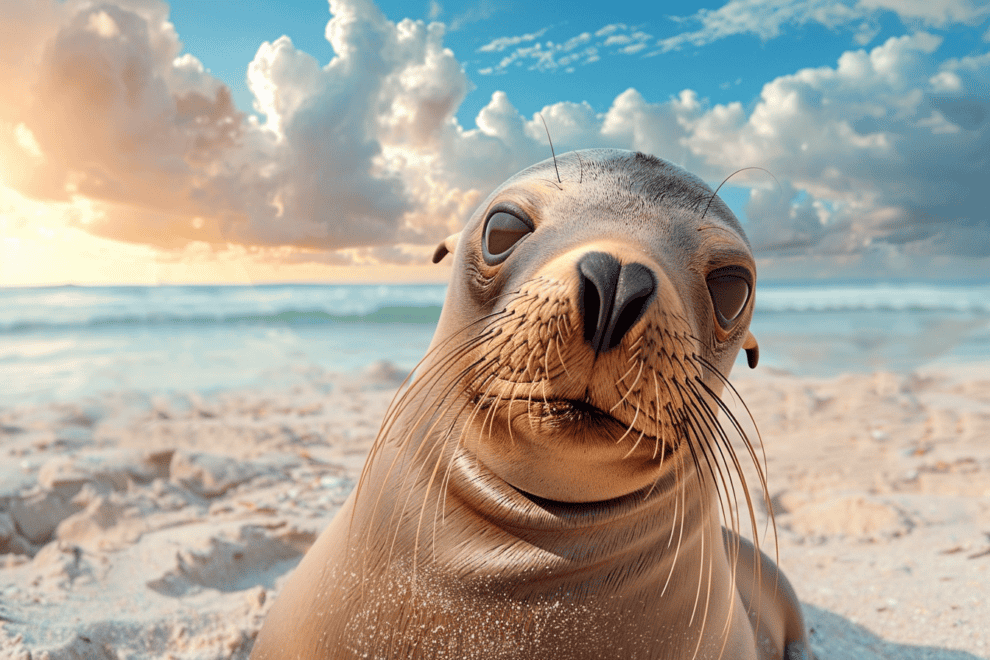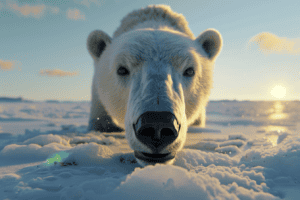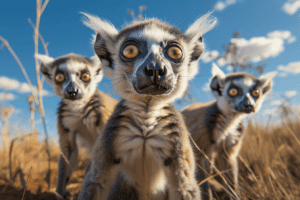Sea lions are remarkable marine mammals that have evolved to thrive in the underwater world. These sleek creatures are known for their impressive diving abilities, which allow them to explore the depths of the ocean in search of food and other resources.
Their underwater skills are so impressive that they have caught the attention of scientists and marine enthusiasts alike.

Sea lions have a unique set of adaptations that enable them to dive deeper and stay underwater longer than most other marine mammals.
One of their most remarkable abilities is their capacity to collapse their lungs, which allows them to withstand the intense pressure of deep dives. By squeezing the air out of their lungs, sea lions can minimize the risk of decompression sickness, a condition that can be fatal for humans and other animals.
Another key adaptation that sea lions possess is their ability to slow their heart rates during deep dives.
This helps them conserve oxygen and extend their time underwater, allowing them to hunt for prey and explore their surroundings in more detail.
These adaptations, along with their streamlined bodies and powerful flippers, make sea lions some of the most skilled and fascinating divers in the animal kingdom.
The Aquatic Acrobats: Physical Adaptations for Diving
Sea lions are remarkable creatures that have evolved to become expert divers. They have a range of physical adaptations that allow them to navigate the depths of the ocean with ease.
Breath of the Ocean: Understanding Respiration and Oxygen Storage
One of the most important adaptations that sea lions have for diving is their ability to store oxygen.
They have large lungs that allow them to take in a lot of air, and they can hold their breath for long periods of time. In fact, sea lions can hold their breath for up to 20 minutes while they are diving!
Sea lions also have a unique respiratory adaptation called a rete mirabile. This is a network of tiny blood vessels that helps to regulate the flow of blood and oxygen to their vital organs.
When a sea lion dives, the rete mirabile helps to reduce blood flow to non-essential organs, such as the digestive system, and redirect it to the heart and brain.
Built for the Depths: Circulatory System and Heart Rate Adjustments
Sea lions also have a range of adaptations that help to regulate their heart rate and blood flow while they are diving. When they dive, their heart rate slows down in a process called bradycardia. This helps to conserve oxygen and allows them to stay underwater for longer periods of time.
Sea lions also have a high concentration of myoglobin in their muscles. Myoglobin is a protein that helps to store oxygen, and it allows sea lions to extract more oxygen from their blood while they are diving.
Fun Facts
- Sea lions can dive to depths of up to 600 feet.
- They can swim at speeds of up to 25 miles per hour.
- Sea lions have a body temperature that is higher than that of most other marine mammals, which helps them to stay warm in cold water.
Masters of the Marine: Sea Lion Species and Their Habitats

Sea lions are fascinating creatures that inhabit a variety of marine environments, from tropical waters to murky depths. There are various species of sea lions, each with its unique habitat and physical characteristics.
Diverse Dwellers: From Tropical Waters to Murky Depths
Sea lions can be found in oceans all around the world, from the Farne Islands off the coast of England to the Galapagos Islands in the Pacific.
Some sea lions, like the California sea lion, prefer warmer waters, while others, like the Steller sea lion, are found in colder, more northern waters.
Sea lions also have unique physical adaptations that allow them to thrive in different environments.
For example, the Australian sea lion has a thicker coat of fur to keep warm in colder waters, while the South American sea lion has a more streamlined body shape to help it swim faster and more efficiently.
Colonies and Communities: Social Structures of Sea Lions
Sea lions are social animals that typically live in large groups called colonies. These colonies can range in size from just a few individuals to thousands of sea lions.
Within these colonies, sea lions have complex social structures that are based on dominance hierarchies.
For example, during the breeding season, only the dominant males are allowed to mate with females, and they will fiercely defend their territory against other males.
Despite their competitive nature during the breeding season, sea lions also exhibit communal behaviors, such as huddling together for warmth and protection from predators. These social structures are essential to the survival and success of sea lion populations.
Underwater Hunters: Sea Lion Feeding and Hunting Techniques

Sea lions are apex predators that have evolved remarkable underwater abilities, allowing them to hunt and capture prey with ease. In this section, we will explore the sensory skills, strategic swimming tactics, and hunting techniques that make sea lions such effective underwater hunters.
Eyes and Ears: Sensory Skills for Locating Prey
Sea lions have excellent sight and hearing, which they use to locate prey in murky water.
Their eyes are adapted to see well in both air and water, and they can distinguish colors and shapes.
Sea lions also have excellent hearing, which allows them to detect the sounds of prey swimming nearby. They are particularly sensitive to low-frequency sounds, which are ideal for locating fish and other prey.
Strategic Swimmers: Pursuit and Capture Tactics
Sea lions are powerful swimmers that can reach speeds of up to 25 miles per hour.
They use their streamlined bodies and torpedo-like shape to move quickly through the water, pursuing and capturing prey.
Sea lions often hunt in groups, surrounding schools of fish and herding them into tight balls. They then take turns diving in and grabbing mouthfuls of fish.
Sea lions also use a variety of hunting techniques to capture different types of prey.
For example, when hunting squid, sea lions will grab them with their front flippers and then use their powerful jaws to bite off the tentacles.
When hunting larger fish, such as salmon, sea lions will often use their flippers to stun the fish before swallowing them whole.
Sea lions are also known for their playful behavior, which often includes chasing and catching penguins. However, this behavior is usually just for fun and not for hunting purposes.
Champions of Conservation: The Importance of Protecting Sea Lions

Sea lions are fascinating creatures that play a vital role in maintaining the balance of marine ecosystems. They are top predators, and their presence helps regulate the populations of fish and other marine animals. However, sea lion populations have been declining due to various human activities, such as overfishing, pollution, and habitat destruction.
Therefore, it is crucial to protect sea lions and their habitats to ensure the survival of these remarkable animals and the health of our oceans.
Conservation efforts are essential for the survival of sea lions, especially the endangered Steller sea lion and the California sea lion.
The Steller sea lion population has declined by more than 80% since the 1970s, and the California sea lion population has also faced significant challenges in recent years due to climate change and other factors.
Therefore, it is crucial to protect sea lion populations and their habitats to ensure their survival in the future.
One way to protect sea lions is by creating marine protected areas (MPAs) that restrict fishing and other activities that may harm the animals and their habitats.
MPAs can help replenish fish populations and provide safe havens for sea lions to rest and breed.
Additionally, beach cleanups and other efforts to reduce pollution can help improve the quality of sea lion habitats and prevent accidental entanglement in fishing gear.
Furthermore, it is essential to raise awareness about the importance of sea lions and their role in maintaining the health of marine ecosystems.
Educating the public about sea lions and their habitats can help foster a sense of appreciation and respect for these remarkable animals and encourage people to take action to protect them.
Frequently Asked Questions

How do sea lions adapt to their underwater environment?
Sea lions are remarkable creatures that have adapted to their underwater environment in many ways. They have streamlined bodies that help them move quickly through the water, and their flippers act like paddles to steer and maneuver.
Sea lions also have large lungs that allow them to hold their breath for up to 20 minutes, and they can slow their heart rate to conserve oxygen while diving. Additionally, sea lions have a special layer of fat called blubber that helps them stay warm in cold water.
What unique behaviors do Galapagos sea lions exhibit?
Galapagos sea lions are known for their playful and curious nature. They often approach humans and seem to enjoy interacting with them.
They also exhibit unique behaviors such as surfing waves, playing with seaweed, and even blowing bubbles underwater.
Galapagos sea lions are social animals and can be seen resting and playing together on the beaches of the Galapagos Islands.
Can you share some fun facts about the Galapagos sea lion?
Sure, here are some fun facts about Galapagos sea lions:
- Galapagos sea lions are the smallest species of sea lion, with males weighing up to 550 pounds and females up to 220 pounds.
- They are endemic to the Galapagos Islands and can be found nowhere else in the world.
- Galapagos sea lions are excellent swimmers and can reach speeds of up to 25 miles per hour.
- They are also skilled hunters and feed on a variety of fish and squid.
What is the habitat of the Galapagos sea lion like?
Galapagos sea lions inhabit the rocky shorelines and beaches of the Galapagos Islands. They can be found on all of the major islands and are often seen basking in the sun on the sand.
The Galapagos Islands are a unique and fragile ecosystem. The sea lions play an important role in maintaining the balance of the ecosystem.
How do sea lions contribute to marine research and military work?
Sea lions have been trained to assist with a variety of tasks, including marine research and military work. They are highly intelligent and trainable, and their ability to dive and navigate underwater makes them valuable assets in these fields.
Sea lions have been used to locate underwater mines, retrieve lost objects, and even assist with ocean conservation efforts.
What demonstrates the intelligence of sea lions in their natural behavior?
Sea lions exhibit many behaviors that demonstrate their intelligence and adaptability.
For example, they use tools such as rocks to crack open shellfish. They also communicate with each other using a variety of vocalizations and body language.
Sea lions are also able to learn and remember complex tasks. They have been observed using problem-solving skills to overcome obstacles in their environment.
All of these behaviors show that sea lions are highly intelligent creatures that have adapted to their environment in remarkable ways.









